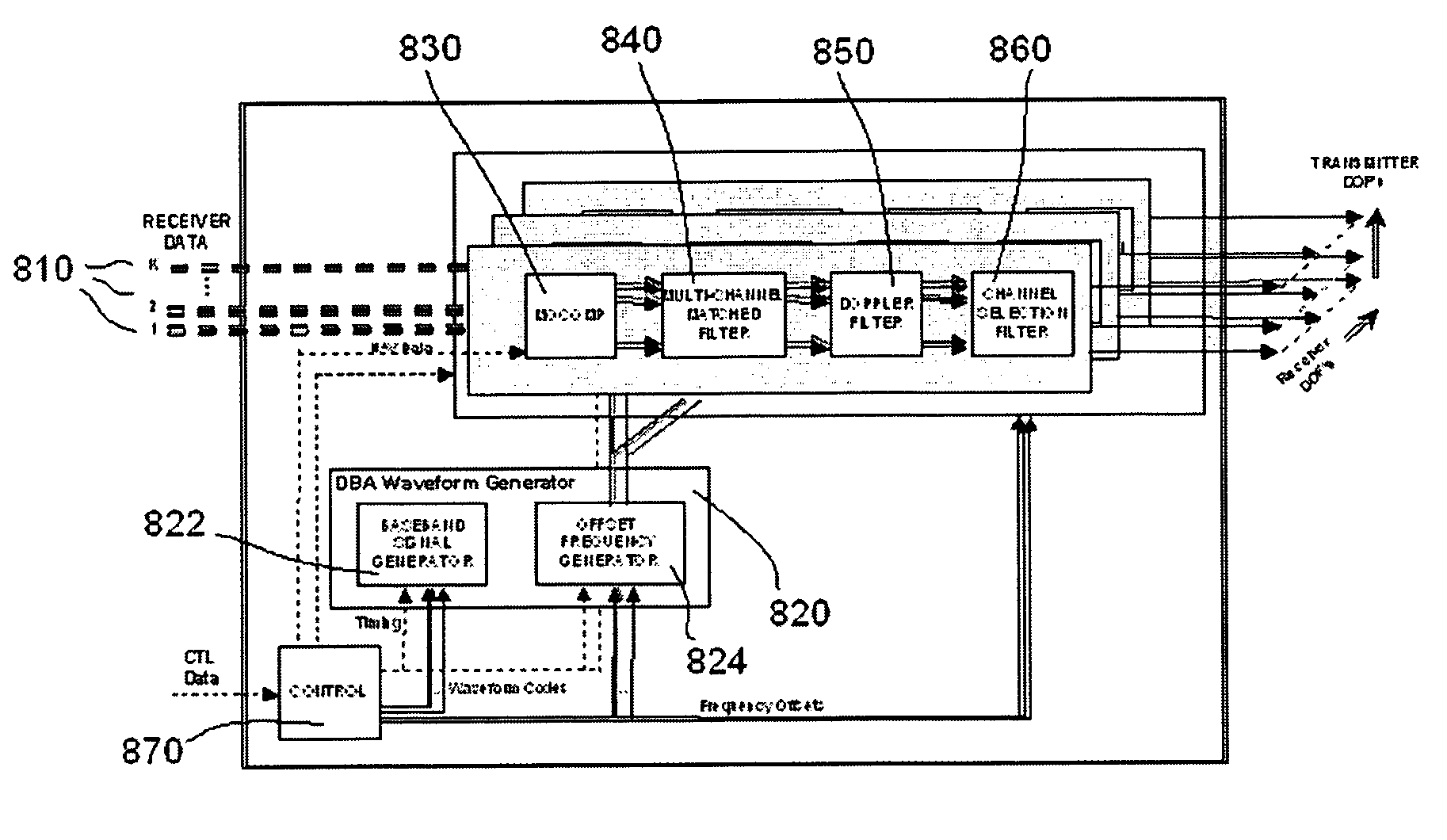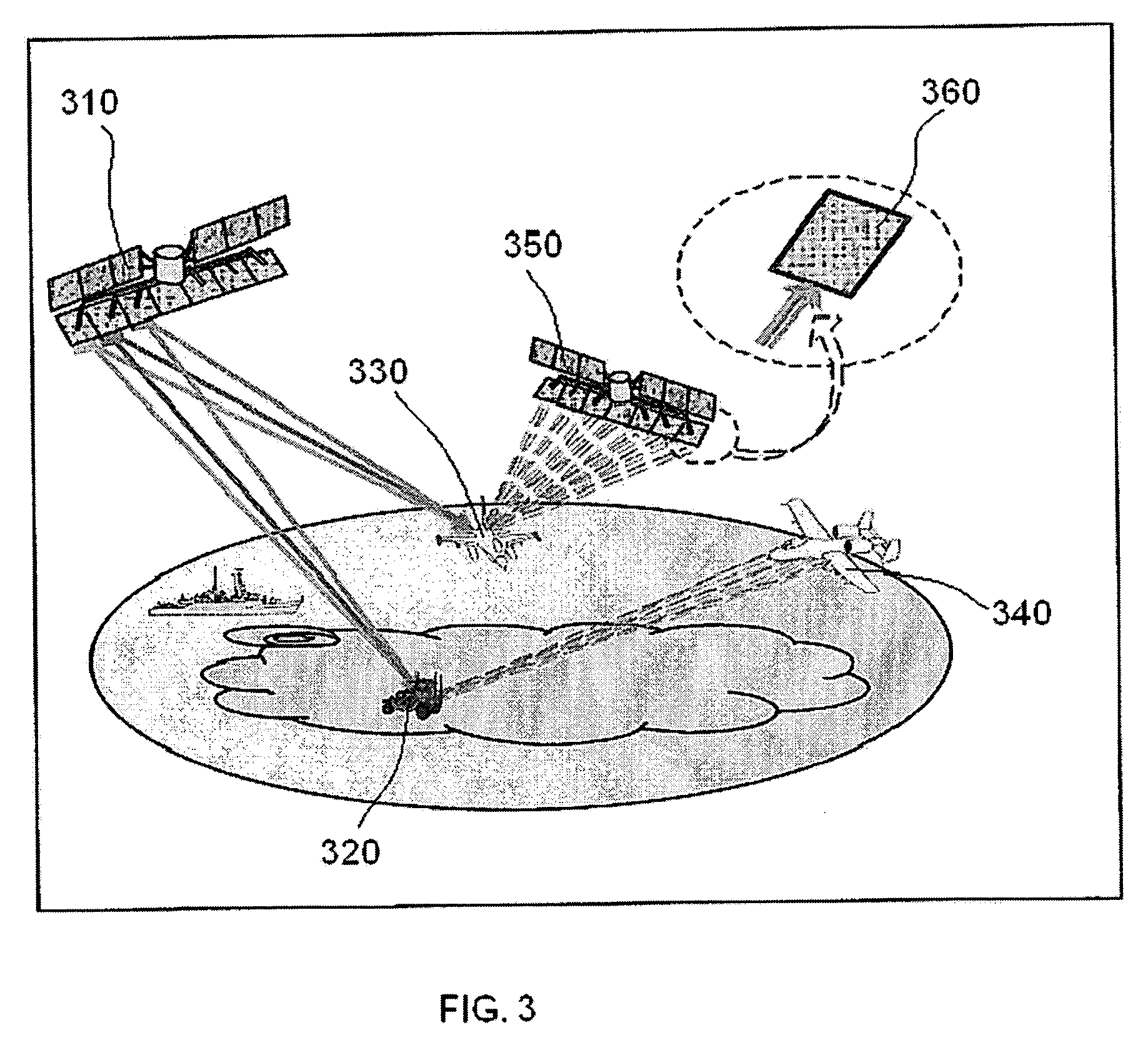Method and apparatus for performing bistatic radar functions
a radar and function technology, applied in the direction of reradiation, measurement devices, instruments, etc., can solve the problems of non-adaptive or deterministic, degrade radar system performance, and greater challenge of ground clutter, so as to eliminate residual degrees of freedom
- Summary
- Abstract
- Description
- Claims
- Application Information
AI Technical Summary
Benefits of technology
Problems solved by technology
Method used
Image
Examples
Embodiment Construction
[0108]The present invention of distributed bistatic apertures builds on basic principles and reformulates the bistatic clutter suppression problem in a way that desirable features of monostatic operation, linearity and delay-independence, re-emerge. In particular, this new approach begins with the observation that the temporal clutter signature, the Doppler shift, is inherently distributed in space-time in the sense that it is depends on a combination of transmitter and receiver motion and position of the clutter patch relative to both the transmitter and receiver. This being the case, a simplified linear coupling with angle measurements will emerge only when the bistatic aperture is expanded to include transmitter degrees of freedom. When this is accomplished, the angle measurements, measurements of the spatial signature (i.e., sensor DOF's), are also distributed and more naturally matched to the observed Doppler effects.
[0109]FIG. 3 depicts an example of an environment of an adapt...
PUM
 Login to View More
Login to View More Abstract
Description
Claims
Application Information
 Login to View More
Login to View More - R&D
- Intellectual Property
- Life Sciences
- Materials
- Tech Scout
- Unparalleled Data Quality
- Higher Quality Content
- 60% Fewer Hallucinations
Browse by: Latest US Patents, China's latest patents, Technical Efficacy Thesaurus, Application Domain, Technology Topic, Popular Technical Reports.
© 2025 PatSnap. All rights reserved.Legal|Privacy policy|Modern Slavery Act Transparency Statement|Sitemap|About US| Contact US: help@patsnap.com



